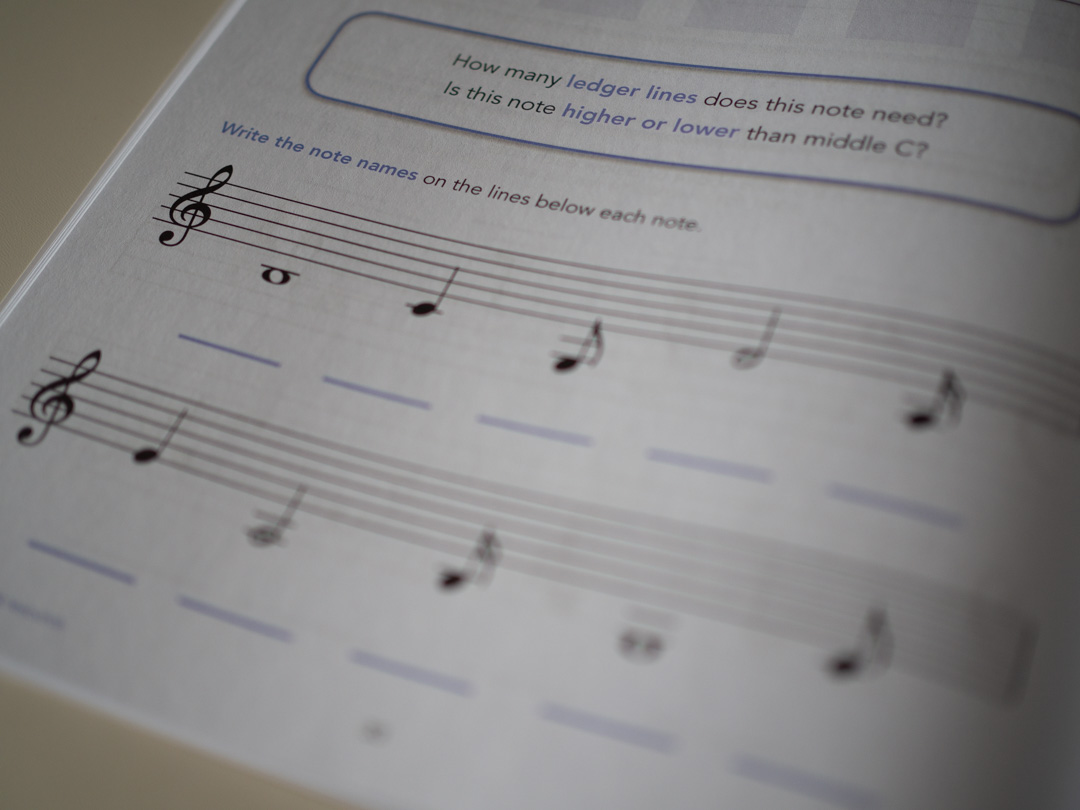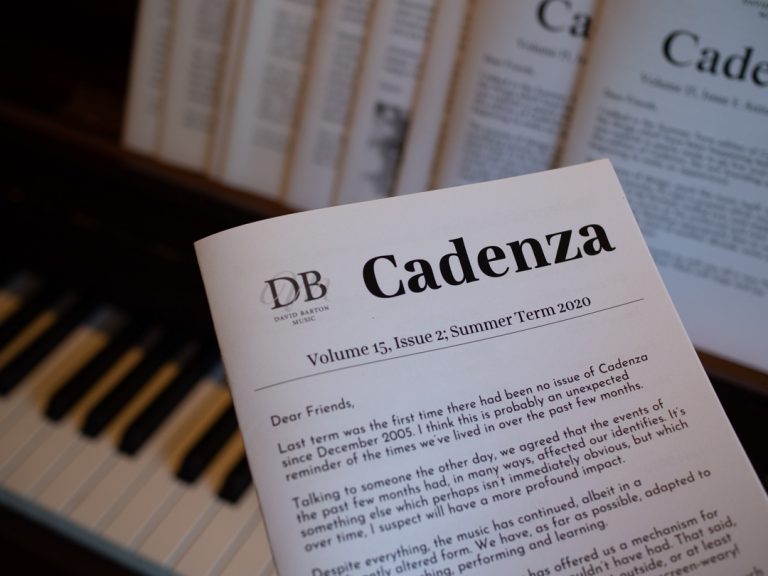The Piano TRACKS Book of Note Names is a new publication as part of a suite of resources to accompany the Piano TRACKS Project. The project aims to help piano teachers and their students by providing:
- Semi-formal assessment tools;
- A curriculum outline that can be tailored to suit individual learners;
- Worksheets, flashcards and other teaching materials;
- Activities and resources.
This isn’t the first time Piano TRACKS has appeared on this blog, but this is the first time I’ve had the opportunity to review an accompanying publication.

The Piano TRACKS Book of Note Names is a 40-page A4 book with the sole aim of offering a resource by which piano students can learn to identify each note on the treble and bass clef staves. The book starts with Middle C and works outwards to include ledger line D in the treble clef and ledger line B in the bass clef. This means that the publication covers all the landmark notes which I know many teachers now work with. The format is particularly useful in this respect as it reflects the mirror image of notes learnt this way.
Each page in the book includes:
- A clear introduction to the note;
- Opportunities to write the notes on the stave;
- Questions to get students thinking about how the note looks and sounds;
- Activities to help students become confident at identifying the notes.
Each note is given its own page in the book, and treble and bass clef are alternated throughout.
The concept of lines and spaces is introduced, allowing students to identify ‘line notes’ such as Middle C and ‘space notes’ such as Treble F. Strong connections are made between the notes on the stave, their location on the piano and he pitches produced.

As the book progresses, so additional note values are introduced, including quavers, semibreves, crotchets, minims and dotted minims. Previous notes are linked back to and students are encouraged to make connections between previously learnt notes, and new notes.
The book is clearly presented with a lovely matte finish on the cover. The pages are clearly laid out with minimal fuss and distraction. Staves are large in size and colours have been kept to a simplistic palette throughout. This means that the book is useful for all ages of learner. It’s perhaps a little on the pricey side in comparison to other similar publications.
As well as inhabiting a useful position within the Piano TRACKS framework, it will be particularly suited to those students who perhaps need a little bit of extra practice when it comes to note reading. The book is very much in a similar format to the ‘notespeller’ books which accompany some tutor book series.
The Piano TRACKS Book of Note Names is available to order from Lulu, ISBN 9781716114700, priced £10.00.
I was sent a review copy of this book free of charge; however, this review is my honest opinion as a teacher. You can find my Reviews Policy here.
Pin for later:





